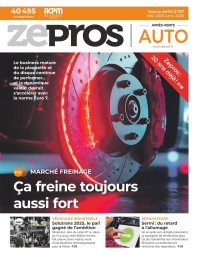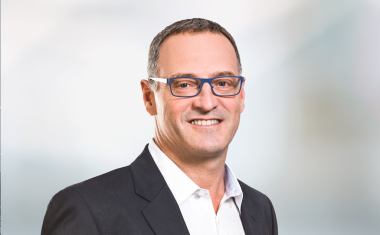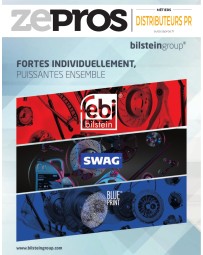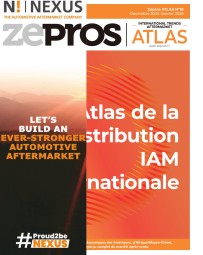
W. Espinoza, ATR: “Our shareholders enjoyed strong returns in 2024, and this is expected to continue into 2025”

With new business opportunities in South America and the commercial vehicle sector, the German ITG continues to make steady progress. Despite the challenges of a disrupted environment, the market remains dynamic and promising for the foreseeable future.
Warren Espinoza: With consolidated revenue of €38 billion, representing growth, 2023 was a record year for ATR. This momentum continued into early 2024, but business slowed in the second half of the year. A full year 2024 should also see growth, but more moderate and with a consolidated revenue that I estimate at between €39 to €40 billion. So this will be another record year for ATR. And because the market, driven by an aging fleet, will remain buoyant for independent spare parts, I am optimistic for 2025.
WE: No, this growth is entirely organic, generated by the same 41 shareholders we had in 2023. We did not add any new members in 2024, as increasing membership is not necessarily a primary objective for us. Our focus is on ensuring that any new members align with our culture and the profile of ATR companies.
That said, expanding our network is essential for increasing influence and generating greater value. From 1 January 2025, five new members will join the group, including a distributor from Europe and four others from Latin America region.
WE: We have observed growing interest in ATR among South American businesses. While most companies in the region tend to be small compared to their European counterparts, this is not always the case as is evidenced with two of our new partners. Despite this progress, there are still a few South American countries where ATR currently has no representation.
The South American market differs significantly from Europe in several ways. Unlike Europe, where unified free trade agreements within the EU create a cohesive market, South America’s economy is highly fragmented.
ATR can play a pivotal role in this region by fostering a community of distributors. Through collaboration, we can address shared challenges and develop practical operational solutions.
WE: That is indeed the question. In these markets, some players require less assistance due to their market focus, which is why we focus on targeting distributors to whom we can deliver clear added value. This means assessing whether our supplier contracts align with the specific demands of these distributors, [Editor's note: particularly those serving European or Western fleets]. In emerging markets, ITGs still need to prove the value they can bring to local businesses. However, when we clearly demonstrate how we can drive growth, the message resonates. That said, building these relationships and establishing trust takes time.
WE: Our committee of ATR shareholders, composed of market experts, has selected four additional suppliers specialising in commercial vehicle products to compliment the increased CV focused, offerings our regular suppliers for the passenger car market. To facilitate collaboration, we will bring these suppliers and our members together in February for a dedicated forum in Germany.
Integrating the ‘commercial vehicle’ component into ATR’s operations requires adjustments to our organisation, including updates to our EPR system. This is part of a broader, global process that is progressing well, with positive feedback from suppliers.
We’ve undertaken this initiative because we see significant growth potential in the commercial vehicle segment, which, while more limited than the passenger car market, is poised to expand in the coming years.
WE: The current turbulence is a result of many complex factors including the Legislation driven transition to the electric vehicle and Europe’s lack of competitiveness in this space. The vehicle manufacturers have entered the race to transition to electric vehicles necessitating that their suppliers do the same. We see many suppliers reorganising their businesses with this new focus. Except that the growth in the electrification of sales is not in line with the expected path. This has a domino effect on those suppliers that have invested heavily in this technology transformation. The IAM is reliant on sourcing product from many of the same suppliers that supply the vehicle manufacturer and thus any impact on them is a concern for the IAM. The fact remains that the IAM will continue to grow driven by an ageing fleet and will require sustainable access to ICE related product from these suppliers. I remain optimistic that the suppliers will continue to provide product for the ICE fleet despite the new focus and together with my members am still positive about the future of their businesses.
WE: Today, we have a much clearer understanding of the direction and pace of adoption for new electric technologies than we did eighteen months ago. This gives us greater confidence in the ongoing shift toward these innovations. The key question now is how quickly this transformation will impact our business. We believe there is still time to adapt, which means focusing on the revenue-generating ICE technologies while preparing for the transition. Our priorities include developing digital solutions, strengthening supply chains, and ensuring we are ready to pivot when the time is right.
WE: We are working with our shareholder partners in markets where Chinese expansion is most advanced to better understand the impact and support mechanisms so we can be better prepared when they expand in Europe. This includes the identification of new suppliers and how they source these products. Because they will soon arrive in Europe. Chinese vehicles will continue to gain ground as they are competitively priced in comparison to the European vehicles and are part of the future, whether we like it or not. As for their market share, I would not like to speculate however, it is clear our political authorities and their decisions will have a direct impact on this development.
WE: The independent aftermarket is well positioned to take advantage of an ageing fleet, digital supply chains and motorists looking for competitive maintenance, as well as new technologies. That said, the current changes seem to be in favour of the car manufacturers and should be taken seriously. Ironically, the car manufacturers need us to provide support for the car throughout its life as their capabilities are limited. The IAM is robust, resilient and has important role in the aftermarket. We must continue to fight, together with Figiefa, to get permanent, affordable and unrestricted access to data. The aftermarket environment will get tougher, with manufacturers applying pressure and the independent aftermarket defending more strongly. I am confident that the IAM will meet this challenge however we must be willing to invest in technology, training and to put in place initiatives that will help us conquer this market or maintain our lead.







